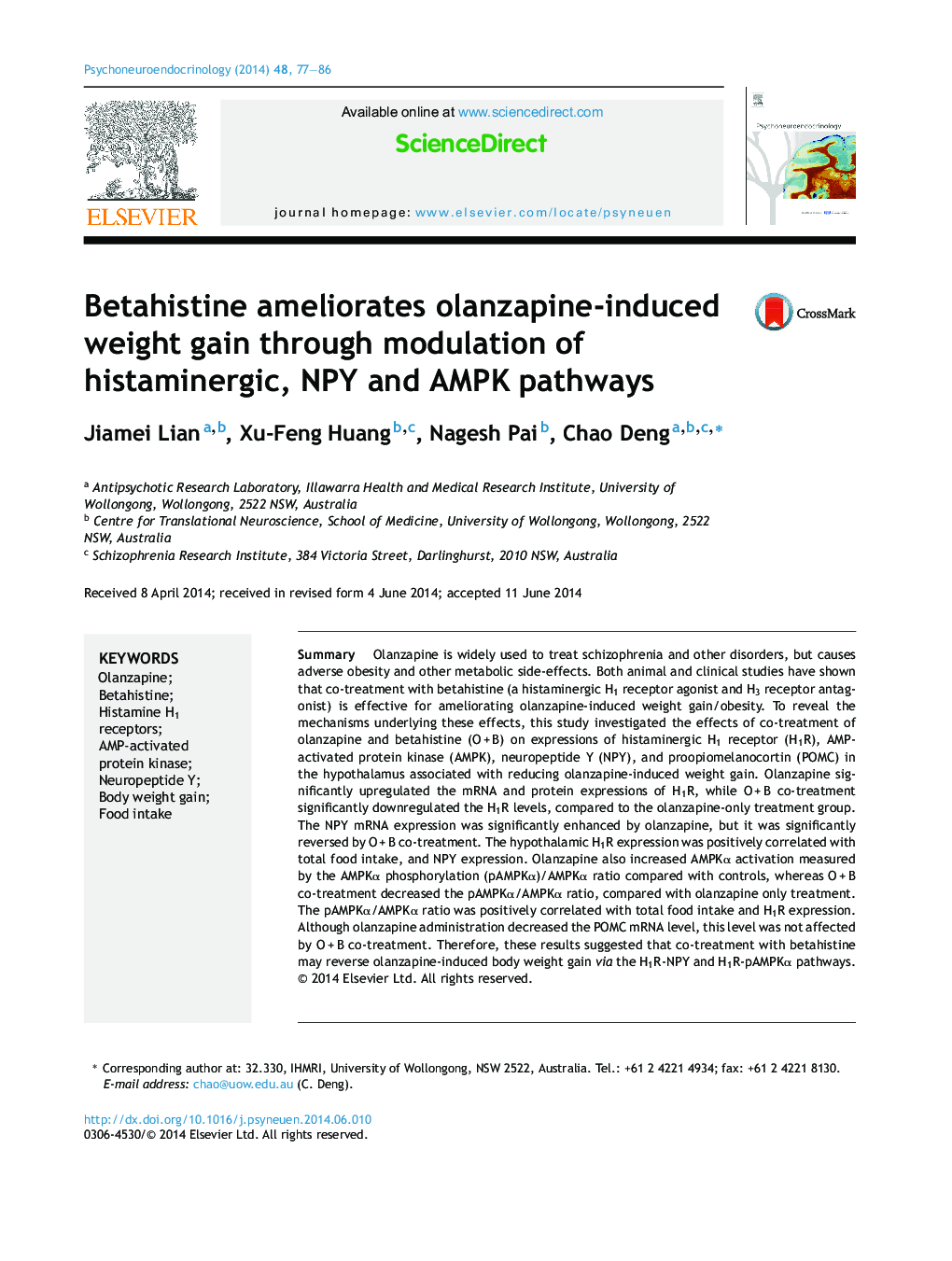| Article ID | Journal | Published Year | Pages | File Type |
|---|---|---|---|---|
| 336279 | Psychoneuroendocrinology | 2014 | 10 Pages |
SummaryOlanzapine is widely used to treat schizophrenia and other disorders, but causes adverse obesity and other metabolic side-effects. Both animal and clinical studies have shown that co-treatment with betahistine (a histaminergic H1 receptor agonist and H3 receptor antagonist) is effective for ameliorating olanzapine-induced weight gain/obesity. To reveal the mechanisms underlying these effects, this study investigated the effects of co-treatment of olanzapine and betahistine (O + B) on expressions of histaminergic H1 receptor (H1R), AMP-activated protein kinase (AMPK), neuropeptide Y (NPY), and proopiomelanocortin (POMC) in the hypothalamus associated with reducing olanzapine-induced weight gain. Olanzapine significantly upregulated the mRNA and protein expressions of H1R, while O + B co-treatment significantly downregulated the H1R levels, compared to the olanzapine-only treatment group. The NPY mRNA expression was significantly enhanced by olanzapine, but it was significantly reversed by O + B co-treatment. The hypothalamic H1R expression was positively correlated with total food intake, and NPY expression. Olanzapine also increased AMPKα activation measured by the AMPKα phosphorylation (pAMPKα)/AMPKα ratio compared with controls, whereas O + B co-treatment decreased the pAMPKα/AMPKα ratio, compared with olanzapine only treatment. The pAMPKα/AMPKα ratio was positively correlated with total food intake and H1R expression. Although olanzapine administration decreased the POMC mRNA level, this level was not affected by O + B co-treatment. Therefore, these results suggested that co-treatment with betahistine may reverse olanzapine-induced body weight gain via the H1R-NPY and H1R-pAMPKα pathways.
